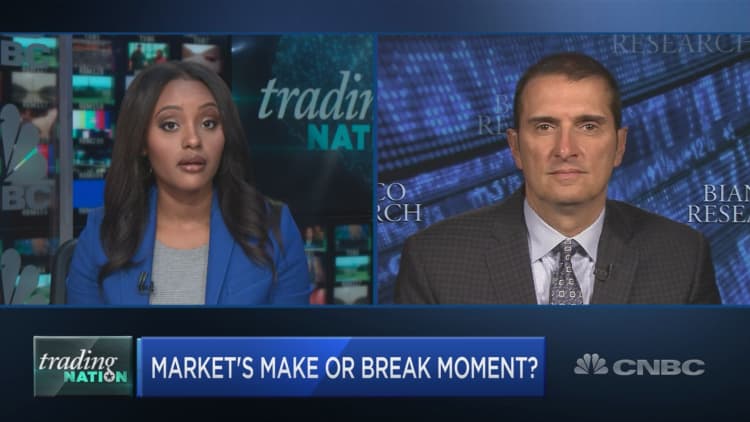Federal Reserve Chairman Jerome Powell gets the opportunity this week to make up with the markets following a remark he made nearly three weeks ago that sent stocks plummeting.
The central bank satisfied investor expectations with a quarter-point interest rate cut July 31 that carried all the markings of an insurance-style move, plus some indications that further moves were possible if warranted.
However, it was Powell's news conference afterward that dampened the good spirits.

Responding to a question about the Fed's future intentions, he characterized the rate reduction as merely a "midcycle adjustment," another in a line of memorable quotes from Powell since last October that have left Wall Street in head-scratching mode. In this case, the market took his statement as a possible one-and-done indicator for cuts ahead.
So when he delivers his annual speech Friday at the Jackson Hole, Wyoming, symposium, Powell will have the opportunity if not to walk back the "mid-cycle" assessment then to at least provide some further explanation about what it means.
One way may be to point out that an adjustment can still mean multiple cuts.
"We think Powell will characterize the Fed as in the process of an ongoing mid-cycle adjustment in interest rates that is not complete (not one and done) and may extend further than originally assessed (not two cuts max)," Evercore ISI economists Krishna Guha and Ernie Tedeschi said in a note to clients.
Changing the narrative to one where the Fed remains open to future cuts even though Powell also may indicate that he doesn't see recession risk on track could be key to calming a highly volatile market atmosphere.
Following the midcycle-adjustment statement, markets sold off aggressively, taking the Dow industrials down 333 points by the time trading ended July 31.
Powell's words are important because monetary policy has been left to quell jangled nerves in light of the ongoing tariff battle between the U.S. and China.
It 'was never one-and-done'
Indeed, a day after the Fed meeting, markets were in recovery mode, making up most of the previous day's losses. Then, the afternoon of Aug. 1, President Donald Trump announced he intended to put tariffs on all Chinese imports, sending stocks right back down.
The unpredictability of the trade war, coupled with low inflation and a slowing global economy, make the Fed's position especially precarious.
"We think the message from Jackson Hole will be that the Committee is open to extending the mid-cycle adjustment further than it earlier anticipated if this seems warranted based on a broad range of developments," Guha and Tedeschi wrote. They added that "the intended message in July was never one-and-done."
In fact, they see a chance that the Fed gets even more aggressive should the economic warning signs become more foreboding.
In such a scenario, the economists see a Fed that "pivots to super-aggressive rate cutting mode" in an effort that ultimately would see a cut in the funds rate down to zero and possibly additional rounds of asset purchases — quantitative easing — "if needed."
Trump issued a pair of tweets Monday calling for similar actions. He called on the Fed to cut interest rates by a full percentage point and to restart its crisis-era money-printing program.


